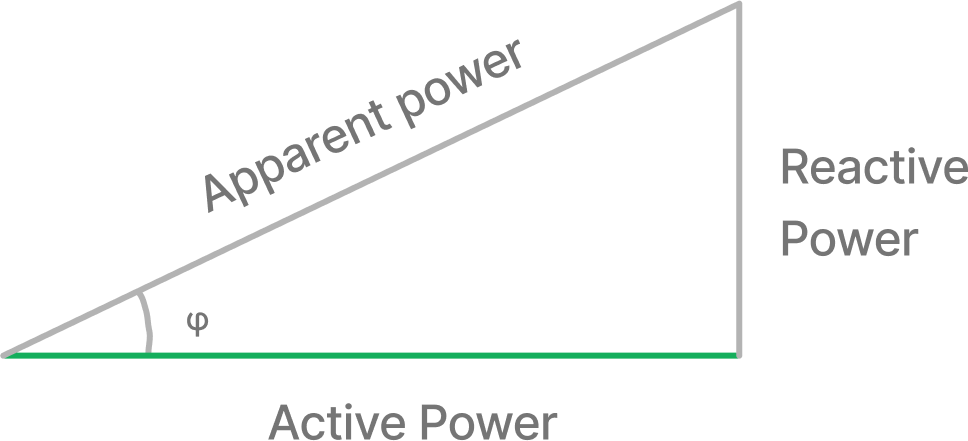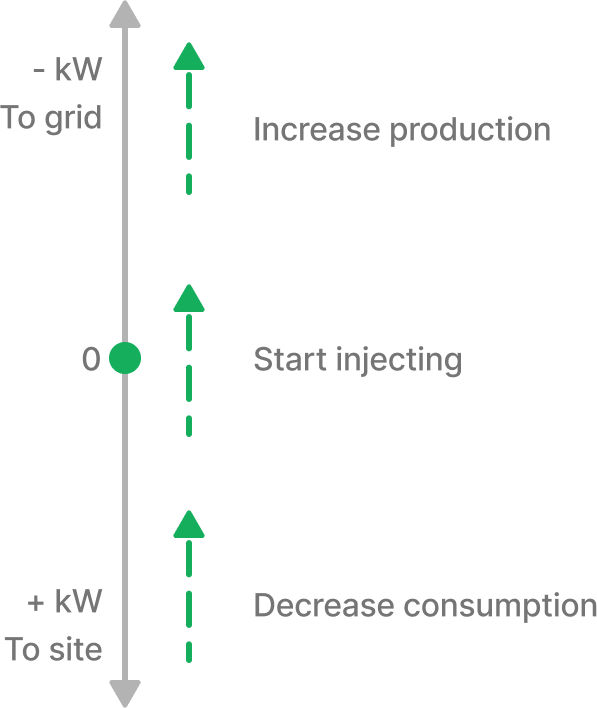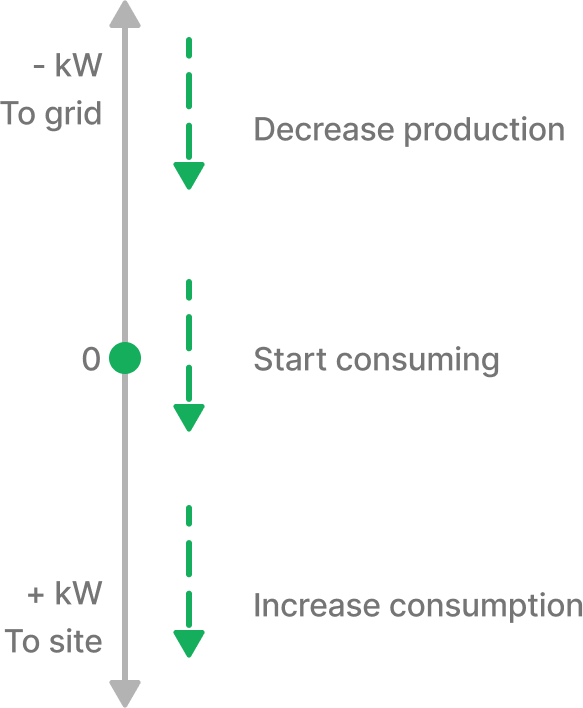Key concepts
Flexibility in the energy sector refers to the ability to adapt energy production and consumption patterns in response to grid demands or market signals. This adaptability is key to maintaining grid stability and efficiency, especially with the growing integration of renewable energy sources.
Demand-Side Flexibility (DSF) refers specifically to the flexibility from consumers on the grid, instead of the generation side.
Active vs. Reactive
First, let's come down to the essentials, and clarify the difference between active and reactive power.
Currently, only active power is used for flexibility. However, we support reporting reactive power for future markets.
Active power, measured in watts (W), is the type of electrical power that actually does the work in any system, such as powering lights, heating spaces, or running motors. Imagine active power as the portion of electricity that's effectively used to accomplish tasks. Active power is what's on the bill from your energy supplier.
Reactive power, on the other hand, measured in volt-amperes reactive (VAR), doesn't do any actual work but is necessary to maintain the voltage levels required for active power to flow efficiently. Think of reactive power as the invisible hand that keeps the electrical current flowing smoothly and efficiently to devices, even though it isn't directly powering any tasks.
The power triangle illustrates how active (W) and reactive power (VAR) combine to form apparent power (VA), which is the total power supplied from the grid. While only active power is billed, the grid must provide enough apparent power to cover both active and reactive demands to ensure efficient operation and voltage stability within the electrical system.

Flexibility direction
Now that we've clarified the difference between active and reactive power, let's move on to the flexibility direction in the case of active power.
Active power can provide both upwards and downwards flexibility.
Understanding flexibility direction is essential because it determines how your resources can help balance the grid. When the grid needs more or less power, your resources can respond by either increasing or decreasing their power consumption or production, creating opportunities for revenue while supporting grid stability.
The figures below help to visualise both situations. They show the flow of power on the main site, where a positive sign equals consumption and a negative sign stands for injection into the grid.
Upwards

Downwards

Upward
Upward flexibility is required when there is too little energy on the grid. This can happen for two reasons:
- A spike in consumption, such as simultaneous electric vehicle (EV) charging in a neighborhood.
- A decrease in production, such as when there are more clouds than anticipated and solar panels produce less.
This can be corrected using either one of:
- Increasing Production: Increasing energy production can help meet the heightened demand. This can for example be done by:
- Using Vehicle-to-Grid (V2G) to inject from an Electric Vehicle (EV) back into the grid
- Activate a battery to inject into the grid
- Decreasing Consumption: By consuming less energy, consumption can decrease to meet current production rates (demand response). Examples include:
- Turning down a heat pump
- Stop or reduce charging of an EV or batteries
Downward
When there's too much energy on the grid, downward flexibility is requested. This can happen for two reasons:
- An increase in production, such as when there's more wind or sun than anticipated.
- Less consumption than anticipated
This can be corrected using either one of:
- Decreasing Production: By producing less energy, production can decrease to meet current demand rates. This can be done by reducing or stopping injection (curtailment) from for example:
- Batteries
- Solar panels
- EVs
- Increasing Consumption: By consuming more, consumption can meet up with production. This can be done by for example:
- Starting or increasing battery charging
- Charging an EV
- Heating up a space by turning up a heat pump.
- Reduce self-consumption, for example by taking from the grid instead of a battery.
Next steps
Now that you understand the fundamentals of flexibility, you're ready to learn how to connect your resources to the platform. In the next section, we'll guide you through the authentication process and show you how to start offering flexibility with your assets.
Let's get your resources connected and start making an impact on the grid! 🚀